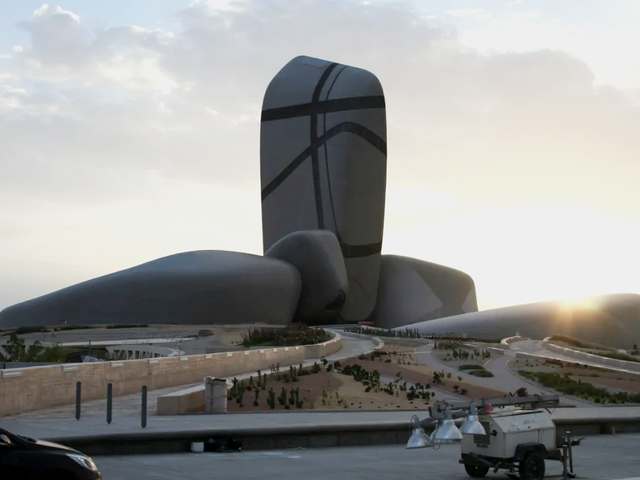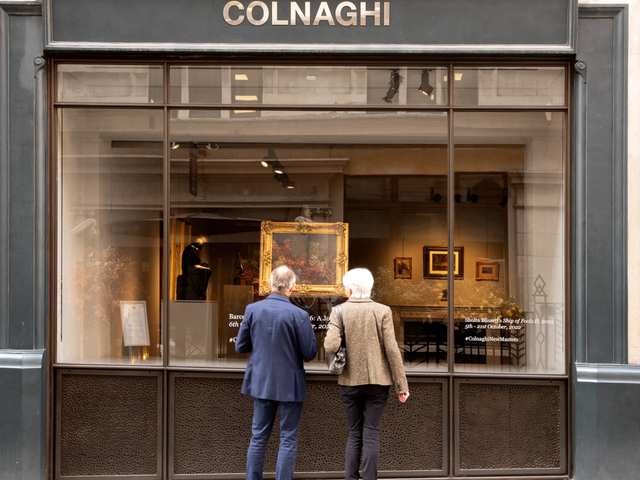As little as ten years ago, putting on an exhibition in Saudi Arabia could be an unpredictable, drawn-out and nerve-wracking affair. If you planned to import work, your task was harder still. Whichever customs officials happened to be on duty as your shipment came through had the authority to block any work of art they felt was religiously offensive or too figurative. One well-known gallery owner remembers fooling Saudi customs by stretching abstract works (which were more acceptable) over figurative ones before sending them into the Kingdom. Yet even abstract works could be damaged by customs officials or destroyed. “You never knew if this was deliberate, clumsy or something else entirely,” says one curator. “And it made it hard to get insurance.”
No less challenging was obtaining approval from the Ministry of Culture and Information. Long before each exhibition, the gallery owner was required to send a list of works to Riyadh and wait for them to be discussed by a committee of senior artists, who had the authority to ban certain works without necessarily giving a reason.
Another obstacle was the Committee for the Promotion of Virtue and the Prevention of Vice, also known as the Haia, or religious police, who would tour the exhibition before it opened. Again, they had the authority to remove works that were not to their liking.
Ten years on, things have evolved. “When we opened the gallery in Jeddah,” says Khaled Samawi, a co-founder of Ayyam Gallery, “I said we needed to change the way art importing happened, so we hired lawyers. Now when we import work, we send a list of the works beforehand to the Ministry of Culture and Information. They approve the importation of the works, so the customs official no longer has a say. From the day we started to do this, until now, every image has been approved.”
Samawi is also responsible for another key change to the system, which followed his experience of censorship in November 2013. He had organised an auction in his gallery of 38 works, all approved by the Ministry of Culture and Information, and had printed the catalogues, only to be told, the day before the auction, that 23 of the lots could not be sold, exhibited or referred to during the sale. This was after an intervention by the Jeddah branch of the Saudi Arabian Society for Culture and Arts (Sasca), though Samawi now believes that a third party had tipped them off—which he stresses was not Athr Gallery, the other principal gallery in Jeddah.
In the days that followed, he put the matter in the hands of his lawyers. Sasca no longer has the authority to ban works once they have been approved by the Ministry of Culture and Information. At a more recent auction in Ayyam Gallery, no works were banned. Indeed the whole process has become more streamlined and less obstructive. The list of images to be shown can be emailed to the Ministry of Culture and Information, a reply is usually received the next day and it has become increasingly rare for works to be banned.
“We didn’t have any problem or trouble,” says Lilia Ben Salah, co-director of Galerie El Marsa in Tunis, of her experience exhibiting work in Jeddah Art Week earlier this year. “The venue was really nice. A lot of people came. I was really surprised.” As the artist Manal Al Dowayan put it, “the most shocking thing about Saudi art today, for many people, is to realise that the boundaries are not that hardcore”.
But this is specific to visual art. The Saudi poet Ashraf Fayadh, a one-time collaborator of artists Ahmed Mater and Abdulnasser Gharem, was jailed in 2013 for “insulting the Godly self”, “having long hair” and “having ideas that do not suit Saudi society”. His crime? He had written a collection of poetry called Instructions Within, which inspired a single complaint from a member of the public five years after it was published in 2008. In February of this year, a petition against his detention was signed by 100 Arab intellectuals and he has since been released.
It seems that the word poses a much graver threat to Saudi traditionalists than the image. “Whatever you write causes such an aggressive reaction, either positive or negative,” adds Al Dowayan. “The power of the word is shocking. The visual medium, for us, is very different because it is more open to interpretation.”
Originally appeared in The Art Newspaper as ‘Bureaucracy and censorship: a palpable thaw'




